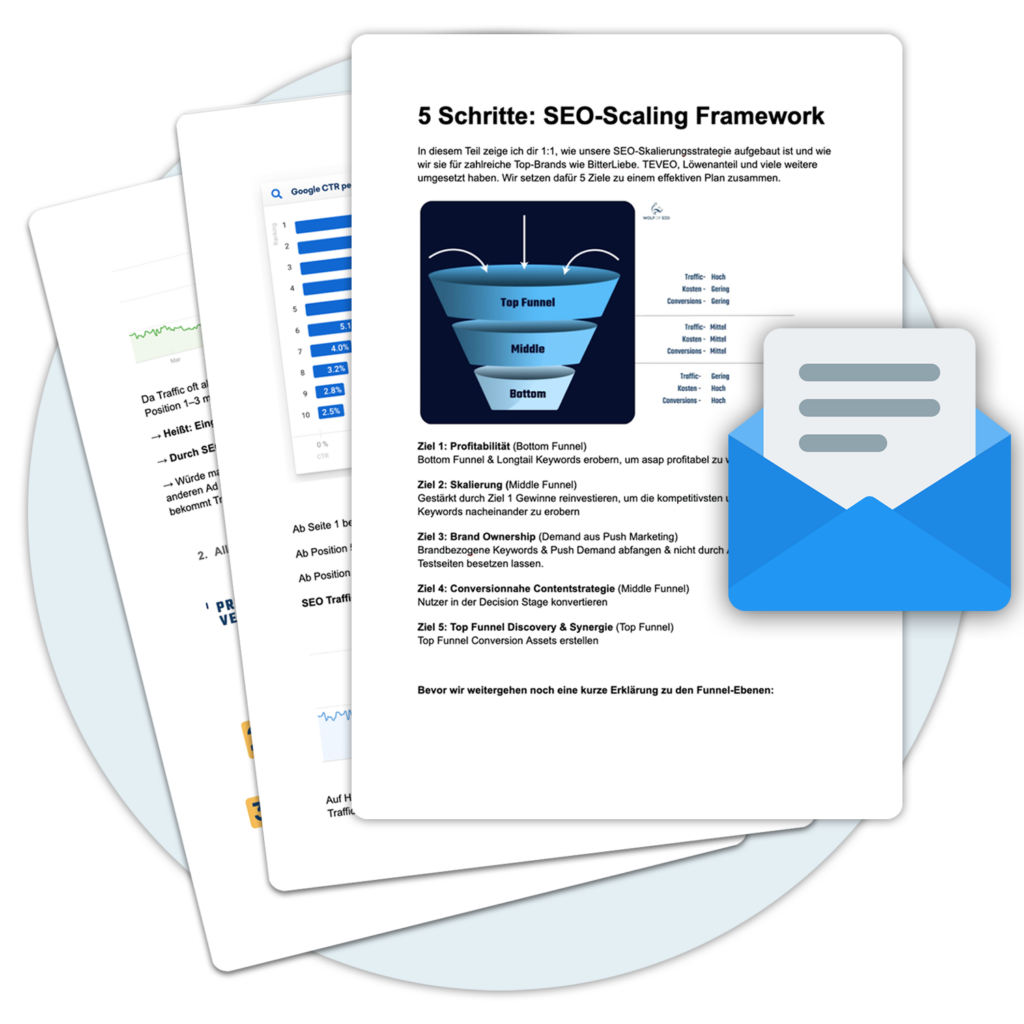The Response time refers to the amount of time that elapses before a request or a click in the Online Marketing a feedback or response is made. It is an important factor for the usability and customer satisfaction of a website or online service.
A fast Response time is a sign of efficiency and professionalism. It shows that a company or website is able to process requests quickly and respond to customer needs. A slow Response time on the other hand, can cause frustration among users and lead them to leave the site or switch to a competitor.
The Response time may vary depending on the context and type of query. For a search query in a Search Engine for example, the user expects a quick display of the Search results. When contacting customer service, on the other hand, the user expects a prompt and personal response.
In order to Response time to measure and improve, various criteria can be used, such as server capacities, website design, and network configuration. A fast Response time can have positive effects on the Online Marketing have, while a slow Response time can scare off potential customers.
The importance of response time for SEO
The Response time of a website plays a decisive role for the SEORanking. The faster a website loads, the better it is for search engine rankings. This is because search engines such as Google want to offer users a good user experience. A fast Response time means a better user experience, as users do not have to wait long for the page to load.
Slow response times can cause users to leave the page before it has fully loaded, which can lead to a higher bounce rate. A high bounce rate can have a negative impact on the SEORanking impact.
A fast Response time is also important for the indexing of pages. Search engine crawlers have limited time to crawl a website. If a page loads slowly, the crawler may not be able to fully index all content. As a result, pages and content may be missing from search results.
Furthermore, the effect of the Response time also has an impact on user behavior. If a page loads quickly, users are more likely to stay on the page longer and view more pages. This can lead to a longer time spent on the page, which in turn has a positive impact on SEO.Ranking can have.
Influences on the response time
The Response time of a website is influenced by various factors. These factors should be taken into account when optimizing the website to ensure fast Response time to ensure. Here are some of the influences on the Response time:
- Server capacities and their impact on the Response time: The hosting package and the performance of the server have a direct impact on the Response time of a website. A slow or overloaded server can lead to long loading times. It is important to ensure that the server has enough resources to support the Traffic on the website.
- Website design and loading speed: The design of a website and the use of technical elements such as images, CSS and JavaScript can influence the loading speed. Poor optimization of these elements can result in slow Response time lead. It is important to optimize the website design and minimize the size of images and other files in order to increase the Response time to improve.
- Network configuration and Response time: The network configuration of the server and the client may also affect the Response time influence. Misconfigurations or a poor network connection can lead to longer loading times. It is important to make sure that the network configuration is optimal in order to avoid the Response time to minimize.
Server capacities and their effect on response time
One of the most important factors influencing the Response time of a website are the server capacities. If the server capacities are not sufficiently dimensioned, this can lead to long response times and negatively affect the user experience.
An overloaded server can only handle a limited number of requests at a time, resulting in longer waiting times for users. This can be especially problematic if a website has high traffic or needs to process many simultaneous requests.
It is therefore important to regularly check server capacities and adjust them if necessary. Scaling the server infrastructure can reduce the Response time improve and ensure that the website functions smoothly even with a high volume of visitors.
Website design and loading speed
The website design plays a crucial role in the loading speed and can have a great impact on the Response time have. A poorly optimized website can lead to the fact that the Response time is slow and the user experience is compromised.
There are several aspects of website design that can affect loading speed:
- Image size and optimization: Large or unoptimized images can significantly slow down the loading time of a web page. It is important to optimize the image size and use compression techniques to reduce the file size without compromising the image quality.
- CSS and JavaScript-files: Unnecessary or not optimized CSS and JavaScript-files can slow down the loading speed of a web page. Minimizing and combining these files can improve the loading time of the web page.
- Browser-Caching: By implementing Browser-Caching loading speed can be improved, since static resources such as images, CSS and JavaScript-files in the Browser are stored temporarily and do not have to be reloaded each time.
Ein gut gestaltetes Websitedesign mit einer schnellen Ladegeschwindigkeit kann dazu beitragen, dass Besucher länger auf der Webseite bleiben, da sie nicht durch lange Ladezeiten frustriert werden. Außerdem kann eine schnell ladende Webseite die SEO-Rankings verbessern, da die Ladezeit ein wichtiger Faktor für die Suchmaschinenoptimierung ist.
Network configuration and response time
Optimal network configuration is crucial for fast Response time of a website. Network configuration includes all technical aspects related to data transfer between server and client. A poor network configuration can lead to a long Response time as the data transmission between the various network components is impaired.
There are various factors that influence the network configuration and thus also the Response time of a website. These include:
- Bandwidth: Sufficient bandwidth is important to be able to transfer data quickly and efficiently. Too little bandwidth can result in delays and a slow Response time lead.
- Latency: Latency is the time it takes to transfer data from one point to another. A high latency can reduce the Response time of a website negatively.
- Package loss: Packet loss occurs when data packets are lost on the way from server to client. This can lead to delays and a longer Response time lead.
In order to optimize the network configuration and thus the Response time of a website, various measures can be taken:
| Measure | Advantages |
|---|---|
| Use of CDN (Content Delivery Network) | Reduces latency by delivering content across geographically distributed servers. |
| Network configuration optimization | Reduces latency and minimizes packet loss by configuring routers and firewalls. |
| Using HTTP/2 | Enables parallel transfer of multiple files and reduces latency. |
Optimization of response times
Optimizing response times is an important factor for the success of Online Marketing-Measures. A fast Response time helps users stay longer on a website, reduces the bounce rate and increases the conversion rate. There are several ways to optimize response times:
- Reduction of data traffic: By minimizing the amount of data transferred between the server and the user, the Response time be improved. This can be achieved, for example, by Compression of files or the use of file compression techniques.
- Use of Cache: Through the use of cache, the Response time can be significantly shortened. Here, certain files or information are stored in the server's or browser's cache so that they do not have to be reloaded when accessed again.
- Optimization of the website design: An optimized website design can improve the Response time positively. This can be achieved, for example, by using suitable image formats, reducing the number of external scripts or minimizing redirects.
By implementing these optimization measures, rapid Response time achieved, which in turn has a positive impact on the Online Marketing has. Search engines like Google take into account the Response time of a website when calculating the ranking. A fast-loading website is therefore given preferential treatment in the search results and thus receives more visibility.
Reduction of data traffic to improve response time
The reduction of data traffic is an important step in order to Response time of a web page. If a web page loads a lot of resources, such as large images, videos, or scripts, this can result in a longer load time. By reducing the amount of traffic, you can minimize the size of the transferred data and thus improve the Response time shorten
There are several ways to reduce traffic:
- Compression: Through the Compression of text and images, you can reduce the size of the files before they are transferred.
- Caching: Storing content in the browser's cache helps avoid repetitive requests and increases the Response time be improved.
- Minification: By removing unnecessary spaces, line breaks, and comments, you can reduce the size of CSS and JavaScript-reduce files.
By reducing data traffic, not only is the Response time improved, but also reduces the load on the server. This can help to keep the website up and running even with high Traffic works smoothly. A fast-loading website is not only a positive signal for visitors, but also for search engines such as Google, which rank websites with fast loading speeds. Response time prefer
Use of cache to speed up response time
The use of Cache is an effective method to Response time of a website significantly. Cache is a temporary memory that caches data so that it can be retrieved immediately when needed, instead of sending a request to the server each time.
By caching static content such as images, CSS files, and scripts, the server can be lightened and the Response time of the website can be significantly shortened.
There are several different types of cache that can be used to Response time to accelerate:
- Browser-Cache: Here, data is stored in the Browser-The content is stored in the visitor's cache to speed up repeated requests. When a visitor revisits a website, static content can be loaded from the cache instead of retrieving it again from the server.
- CDN Cache: A Content Delivery Network (CDN) can use a cache to distribute static content to multiple servers. This means that the files are stored closer to the visitor locations and the Response time reduced.
- Server cache: The server can use a cache to hold frequently requested content and serve it faster. This reduces the load on the server and increases the Response time improved.
The use of the cache in combination with other optimization techniques such as Compression of files and minimization of HTTP requests can lead to a significant improvement of the Response time of a website.
Optimization of the website design to improve the response time
Effective optimization of the website design can significantly contribute to the improvement of the Response time Contribute. There are several design aspects that should be considered to optimize the loading time of the website:
- Minimize the file size: A large file size can lead to a longer loading time. By minimizing the file size, for example by using the Compression of images or the reduction of the number of files, the Response time be significantly improved.
- Correct use of images: Images are often the main reason for longer loading times. Optimizing the images, for example by using the right format and size, can reduce the loading time. In addition, only relevant images should be used to minimize the file size.
- Efficient CSS and JavaScript: An optimized use of CSS and JavaScript can use the Response time of a web page. By merging and minimizing CSS and JavaScript-files can reduce the loading time.
- Use of Caching: Through the correct setting of Caching-header, repeated loading processes can be avoided and the Response time be improved.
- Responsive Design: A responsive design enables optimal display of the website on different devices and screen sizes. This not only improves the user experience, but also reduces the loading time.
A thorough review of the website design and the implementation of these optimization measures can lead to a significant improvement of the Response time and thus have a positive influence on the Online Marketing have
Impact of fast response time on online marketing
A fast Response time has numerous positive effects on the Online Marketing and can improve both user experience and SEO rankings. Below are some of the main effects of a fast Response time listed:
- Better user experience: A website with a fast Response time ensures that visitors do not have to wait long for content to load. This leads to a positive user experience and increases the likelihood that visitors will stay longer on the website and visit more pages.
- Lower bounce rates: A slow Response time can cause visitors to become impatient and leave the website prematurely. A fast Response time reduces bounce rates and ensures that visitors stay longer on the website.
- Better Ranking with search engines: Search engines like Google take into account the Response time a web page as Ranking-factor. A fast Response time can help a website appear higher in the search results and thus generate more organic traffic. Traffic generated.
- Better conversion rates: A fast Response time also has an impact on conversion rates. When visitors arrive at a web page and it loads quickly, they are more likely to perform a desired action, such as making a purchase or signing up for a newsletter.







